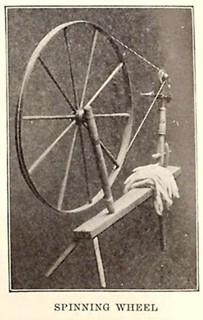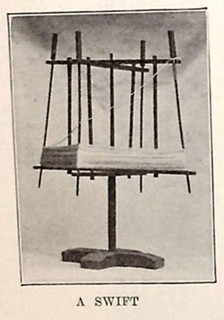THE SIMPLE MACHINES OF THE NEW HOME pgs 85-89
In selecting a place for the cabin the owner might be fortunate enough to find a living spring of water near by. If not so lucky, he must have a well and draw the water with a bucket. There were no wind pumps or engines to raise the water, and perhaps not even a windlass to pull the bucket up by turning a crank, but there was a simple way by which any man could have some help in lifting the water. For example, by resting a yard stick or any such bar of wood across a support it will be balanced when suspended at the middle, but by hanging something on one end it will tip up.
Such a simple machine was used to pull up the water bucket out of the well. A heavy pole, bigger at one end than at the other, was hung in a forked post set deep into the ground. On the big end of the long pole a load of chunks or wood or of rock was fastened; and to the small end there was fastened a light pole which carried the bucket down into the well. This “well sweep” was not hard to pull down and when the bucket was full of water, the load on the big end of the pole helped to pull it up. Later a pulley and a rope with a bucket at each end was used to draw the water. In some neighborhoods the tall well curb with the pulley at the top may yet be found.






